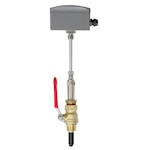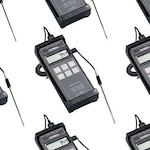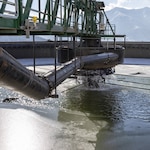Electromagnetic flow meters are widely used to measure the flow rate of conductive fluids. Their accuracy and reliability make them a preferred choice for various industrial applications, including water treatment, chemical processing, and HVAC systems.

Proper installation is crucial to ensure precise readings and long-term performance. Factors such as pipe material, flow profile, grounding, and meter orientation play a significant role in the accuracy of the measurement. Additionally, selecting the right installation method – whether in-line or hot-tap – depends on the system’s operational requirements and constraints. Improper installation can lead to errors in readings, increased maintenance, and even system inefficiencies.
General Installation Best Practices
To achieve accurate and consistent flow measurements, it is essential to follow proper installation techniques. Keep in mind, even a high-quality electromagnetic flow meter will fail to provide reliable readings if installed incorrectly. The location of the meter, the condition of the pipeline, and adherence to manufacturer guidelines all play a critical role in ensuring accurate performance.
By implementing best practices during installation, operators can maximize measurement accuracy, reduce downtime, and extend the lifespan of the device.
- Pipe Material and Compatibility: Ensure that the meter is compatible with the pipe material and fluid type.
- Straight Pipe Run Requirements: Install the meter with sufficient straight pipe sections before and after to minimize turbulence. Typically, 5-10 pipe diameters upstream and 2-5 diameters downstream are recommended.
- Avoid Air Pockets and Ensure a Full Pipe: Mount the meter in a location where the pipe is always full to prevent inaccurate readings.
- Proper Grounding and Wiring: Follow manufacturer guidelines for grounding and shielding to minimize electrical noise and interference.
In-Line Installation
In-line installation involves integrating the electromagnetic flow meter directly into the pipeline – replacing a section of the pipe. To ensure proper functionality, the meter must always be full of liquid. This makes vertical installations with upward flow preferable, as they help maintain full pipe conditions. Horizontal installations can also be effective, provided the meter is placed at a low point in the piping system and the electrodes are not positioned at the top of the pipe, which could lead to air contact and inaccurate readings.
If the process fluid is a slurry and the meter is installed at a low point, it should be removed during long shutdowns to prevent solids from settling and coating the internals. If periodic draining of the meter is necessary, an empty tube zero option can be utilized. This feature detects when the tube is empty using extra electrodes and ensures that the transmitter output is set to zero, preventing erroneous readings.
To maintain measurement accuracy and minimize wear, in-line magmeters require five diameters of straight pipe upstream and two diameters downstream. If installed in horizontal pipes longer than 30 feet, additional support should be provided on both sides of the meter to reduce mechanical stress.
Proper grounding is essential for the operation of an in-line magmeter, as the meter becomes part of the electrical path for stray currents traveling through the process fluid. Bonding the meter at both ends to the process fluid ensures that these currents are routed around the flow tube instead of through it, preventing zero shifts in the output. Grounding can be achieved using metal ground straps for conductive pipes, while non-conductive or lined pipes require grounding rings to establish an electrical connection with the process fluid.
Pros
✔ High accuracy and reliability
✔ No additional fittings needed
✔ Minimal maintenance once installed
Cons
✖ Requires stopping flow for installation or removal
✖ Can be costly if retrofitting an existing system
Hot-Tap Installation
Hot-tap installation is a specialized method that allows an electromagnetic flow meter to be inserted into a pressurized pipeline without the need for system shutdown. This installation technique is highly beneficial for applications where continuous operation is required, such as municipal water distribution, industrial processing, and HVAC systems.
Unlike in-line installation, which requires a complete system shutdown and pipe modification, hot-tap installation involves creating an access hole in an operational pipeline using a tapping machine. The flow meter is then inserted through a special fitting, ensuring minimal distribution to the flow and system pressure. This approach is particularly useful in large-scale systems where shutting down the process would be costly and time-consuming.
While hot-tap installation provides greater flexibility and reduced downtime, it is essential to ensure proper sealing and alignment to prevent leaks and maintain measurement accuracy. Additionally, as this method involves precise drilling and insertion, it may require specialized tools and skilled personnel for execution.
Pros
✔ No system shutdown required
✔ Ideal for installations on large or pressurized pipes
✔ Easier and more cost-effective for retrofitting
Cons
✖ Slightly lower accuracy compared to in-line installation
✖ Requires precise drilling and sealing to prevent leaks
Both in-line and hot-tap installation methods have their advantages and are suitable for different applications. If precision and reliability are the top priorities, in-line installation is the best choice. However, if shutting down the system is not an option, hot-tap installation is an effective alternative. Proper installation ensures long-term performance, accurate flow measurement, and minimal maintenance.
Explore DwyerOmega's Full Selection of Flow Measurement & Control Technology




